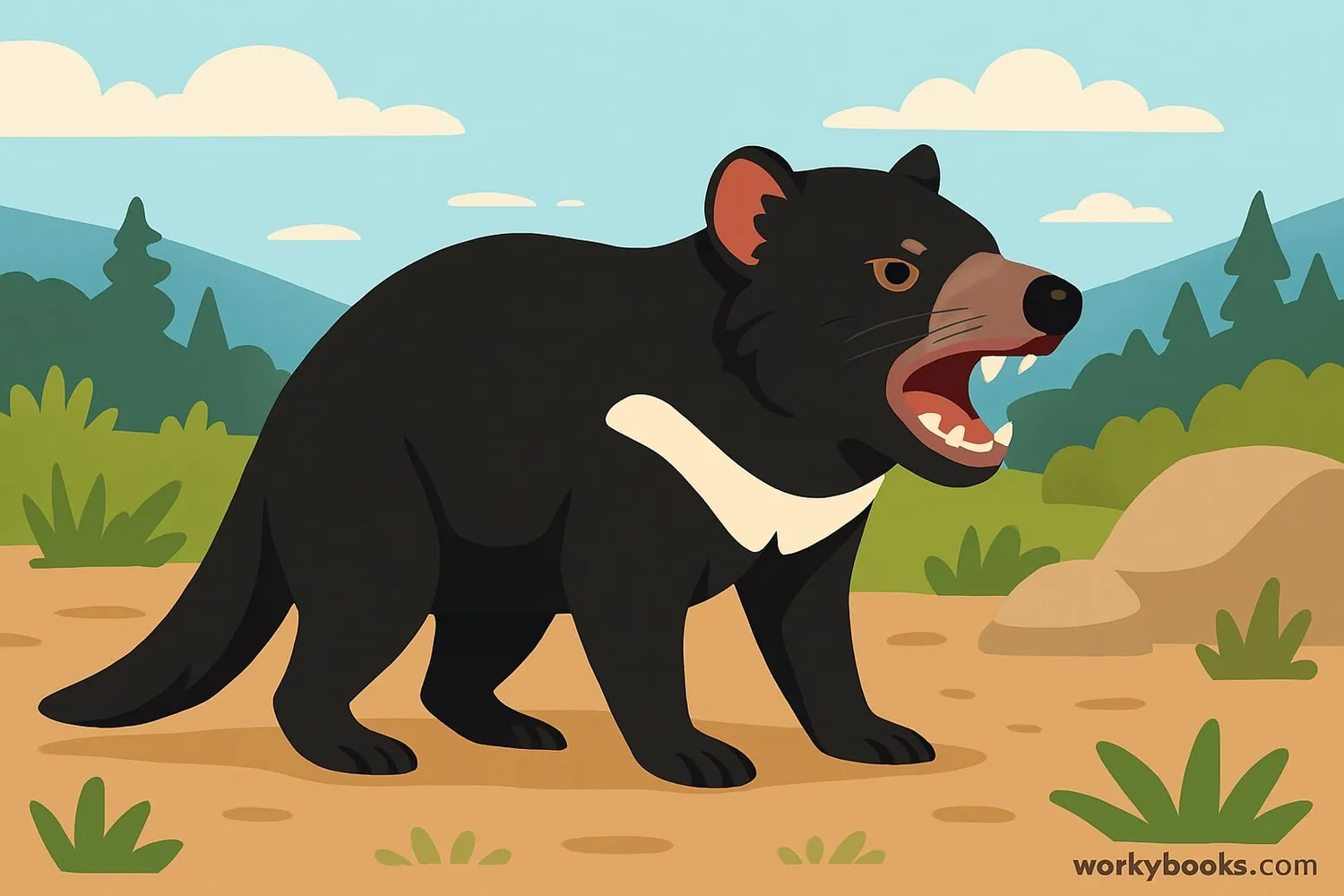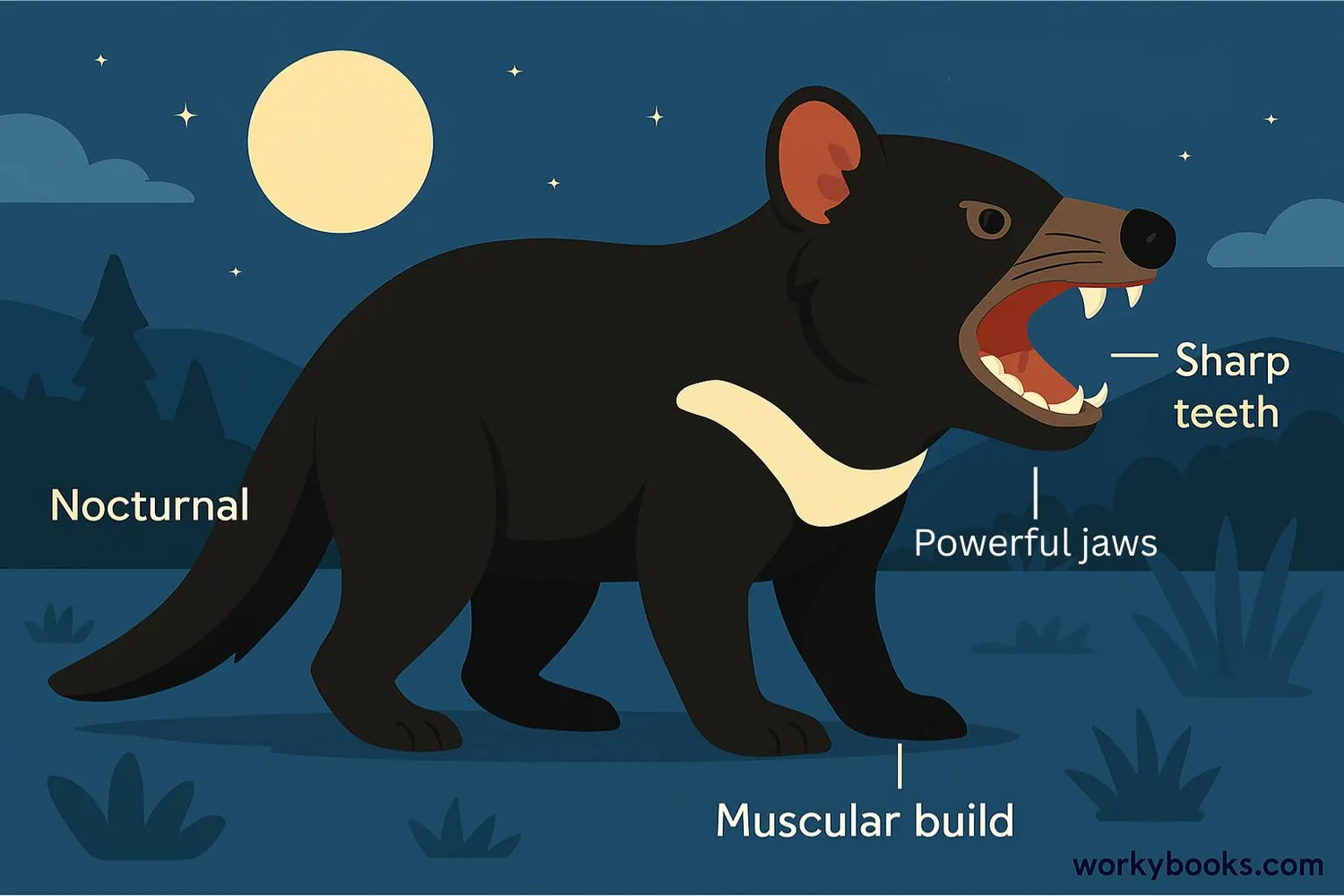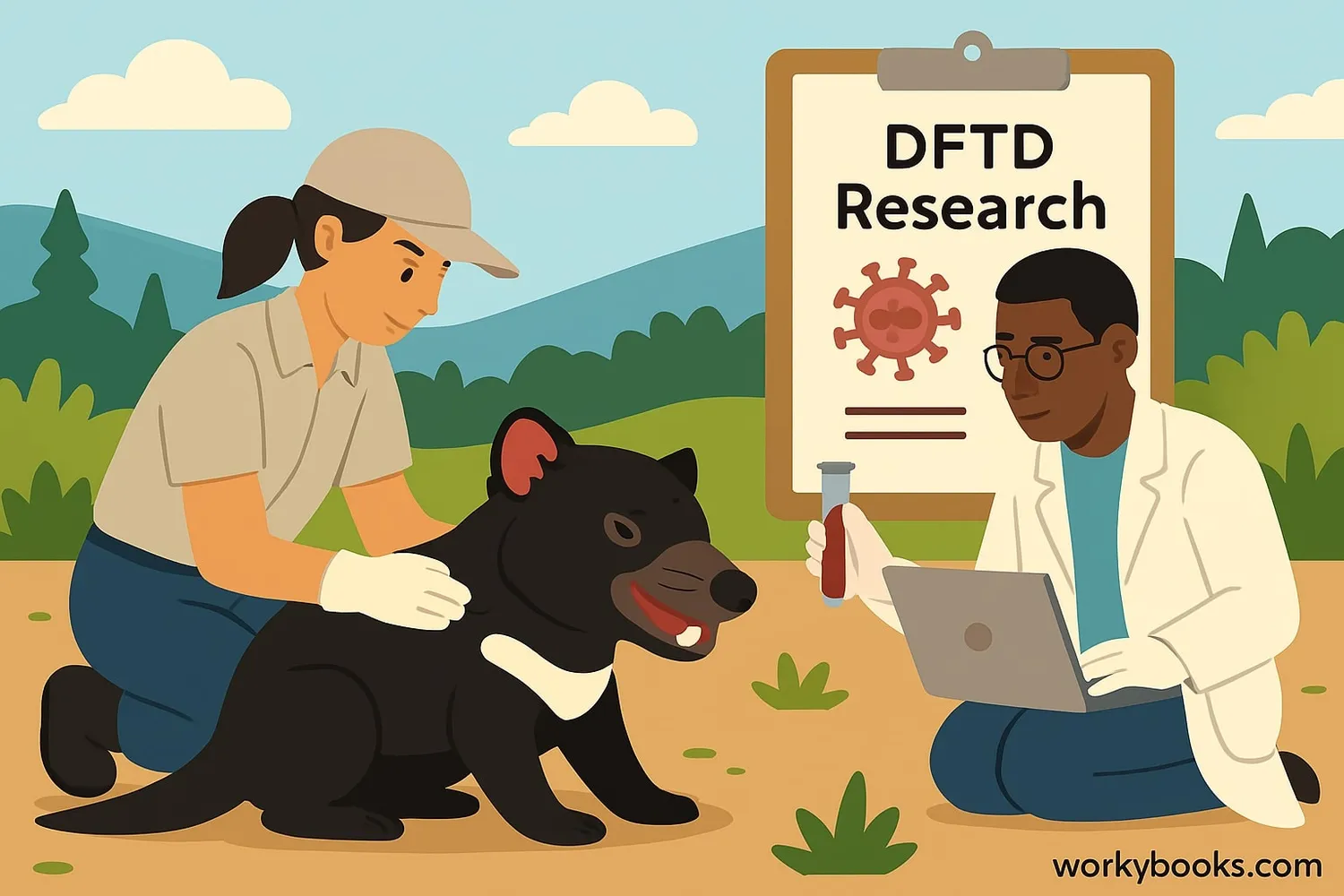Tasmanian Devil - Definition, Examples, Quiz, FAQ, Trivia
Discover Australia's unique carnivorous marsupial
What is a Tasmanian Devil?

The Tasmanian devil is a unique carnivorous marsupial found only on the Australian island of Tasmania. As the world's largest surviving carnivorous marsupial, these animals are known for their stocky build, black fur, and loud screeches.
Tasmanian devils are an endemic species, meaning they are found nowhere else in the wild. They play a vital role in Tasmania's ecosystem as marsupial predators, helping to control populations of smaller animals and clean up carrion.
Name Origin
Tasmanian devils got their name from early European settlers who were frightened by their loud screeches, fierce appearance, and aggressive feeding behavior.
Characteristics and Behavior

Tasmanian devils have several unique physical and behavioral characteristics:
Nocturnal Animals
Active at night, they rest during the day in dens or hollow logs
Carnivorous Diet
They eat small mammals, birds, reptiles, insects, and carrion
Vocal Communication
Known for loud screeches, growls, and screams used for communication
Additional interesting facts about Tasmanian devils:
• They have one of the strongest bites relative to body size of any mammal
• Their powerful jaws can crush bones, enabling them to consume entire carcasses
• Despite their fierce reputation, they're generally shy and avoid humans
• Females carry their young (called joeys) in a backward-facing pouch
Conservation Status

Endangered Species
Tasmanian devils are currently listed as endangered due to a contagious cancer called Devil Facial Tumor Disease (DFTD)
Tasmanian devils face significant conservation challenges:
Devil Facial Tumor Disease (DFTD): This contagious cancer has devastated wild populations, spreading when devils bite each other during feeding or mating. It causes large tumors on the face and mouth, making it difficult for devils to eat, eventually leading to starvation.
Conservation Efforts: Scientists and conservationists are working hard to save these unique animals through:
Disease Research
Developing vaccines and treatments for DFTD
Captive Breeding
Establishing healthy populations in wildlife parks
Wildlife Corridors
Creating safe passages across roads to prevent accidents
Thanks to these wildlife conservation efforts, there's hope for the survival of this unique Australian wildlife species. Healthy populations are being maintained in captivity while scientists work to find solutions for the wild populations.
Tasmanian Devil Quiz
Test your knowledge about Tasmanian devils with this multiple-choice quiz!
Frequently Asked Questions
Here are answers to common questions about Tasmanian devils:
Fascinating Tasmanian Devil Trivia
Discover some amazing facts about these unique Australian animals:
Eating Habits
Tasmanian devils can eat up to 40% of their body weight in one meal! Their powerful jaws allow them to consume bones, fur, and all parts of their prey.
Surprising Speed
Despite their stocky build, Tasmanian devils can run up to 15 mph (24 km/h) for short distances. They're also excellent swimmers and climbers.
Powerful Bite
Tasmanian devils have the strongest bite force relative to body size of any living mammal. Their bite force is comparable to much larger animals like lions!
Fat Storage
Healthy Tasmanian devils store fat in their tails. A thick tail indicates a well-nourished animal, while a thin tail may indicate illness or poor nutrition.


